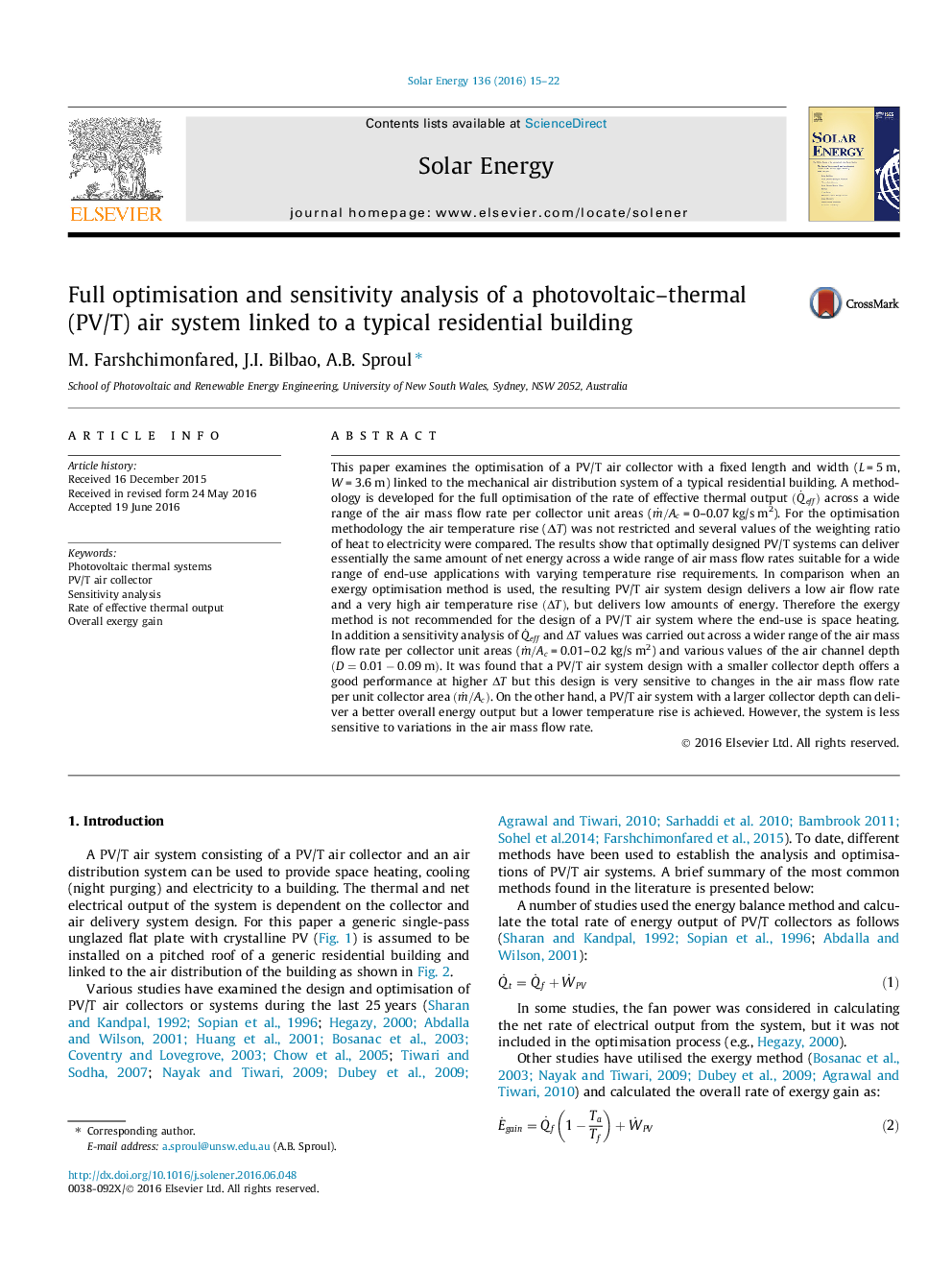| کد مقاله | کد نشریه | سال انتشار | مقاله انگلیسی | نسخه تمام متن |
|---|---|---|---|---|
| 7936365 | 1513082 | 2016 | 8 صفحه PDF | دانلود رایگان |
عنوان انگلیسی مقاله ISI
Full optimisation and sensitivity analysis of a photovoltaic-thermal (PV/T) air system linked to a typical residential building
دانلود مقاله + سفارش ترجمه
دانلود مقاله ISI انگلیسی
رایگان برای ایرانیان
موضوعات مرتبط
مهندسی و علوم پایه
مهندسی انرژی
انرژی های تجدید پذیر، توسعه پایدار و محیط زیست
پیش نمایش صفحه اول مقاله

چکیده انگلیسی
This paper examines the optimisation of a PV/T air collector with a fixed length and width (L = 5 m, W = 3.6 m) linked to the mechanical air distribution system of a typical residential building. A methodology is developed for the full optimisation of the rate of effective thermal output (QÌeff) across a wide range of the air mass flow rate per collector unit areas (mÌ/Ac = 0-0.07 kg/s m2). For the optimisation methodology the air temperature rise (ÎT) was not restricted and several values of the weighting ratio of heat to electricity were compared. The results show that optimally designed PV/T systems can deliver essentially the same amount of net energy across a wide range of air mass flow rates suitable for a wide range of end-use applications with varying temperature rise requirements. In comparison when an exergy optimisation method is used, the resulting PV/T air system design delivers a low air flow rate and a very high air temperature rise (ÎT), but delivers low amounts of energy. Therefore the exergy method is not recommended for the design of a PV/T air system where the end-use is space heating. In addition a sensitivity analysis of QÌeff and ÎT values was carried out across a wider range of the air mass flow rate per collector unit areas (mÌ/Ac = 0.01-0.2 kg/s m2) and various values of the air channel depth (D=0.01-0.09m). It was found that a PV/T air system design with a smaller collector depth offers a good performance at higher ÎT but this design is very sensitive to changes in the air mass flow rate per unit collector area (mÌ/Ac). On the other hand, a PV/T air system with a larger collector depth can deliver a better overall energy output but a lower temperature rise is achieved. However, the system is less sensitive to variations in the air mass flow rate.
ناشر
Database: Elsevier - ScienceDirect (ساینس دایرکت)
Journal: Solar Energy - Volume 136, 15 October 2016, Pages 15-22
Journal: Solar Energy - Volume 136, 15 October 2016, Pages 15-22
نویسندگان
M. Farshchimonfared, J.I. Bilbao, A.B. Sproul,